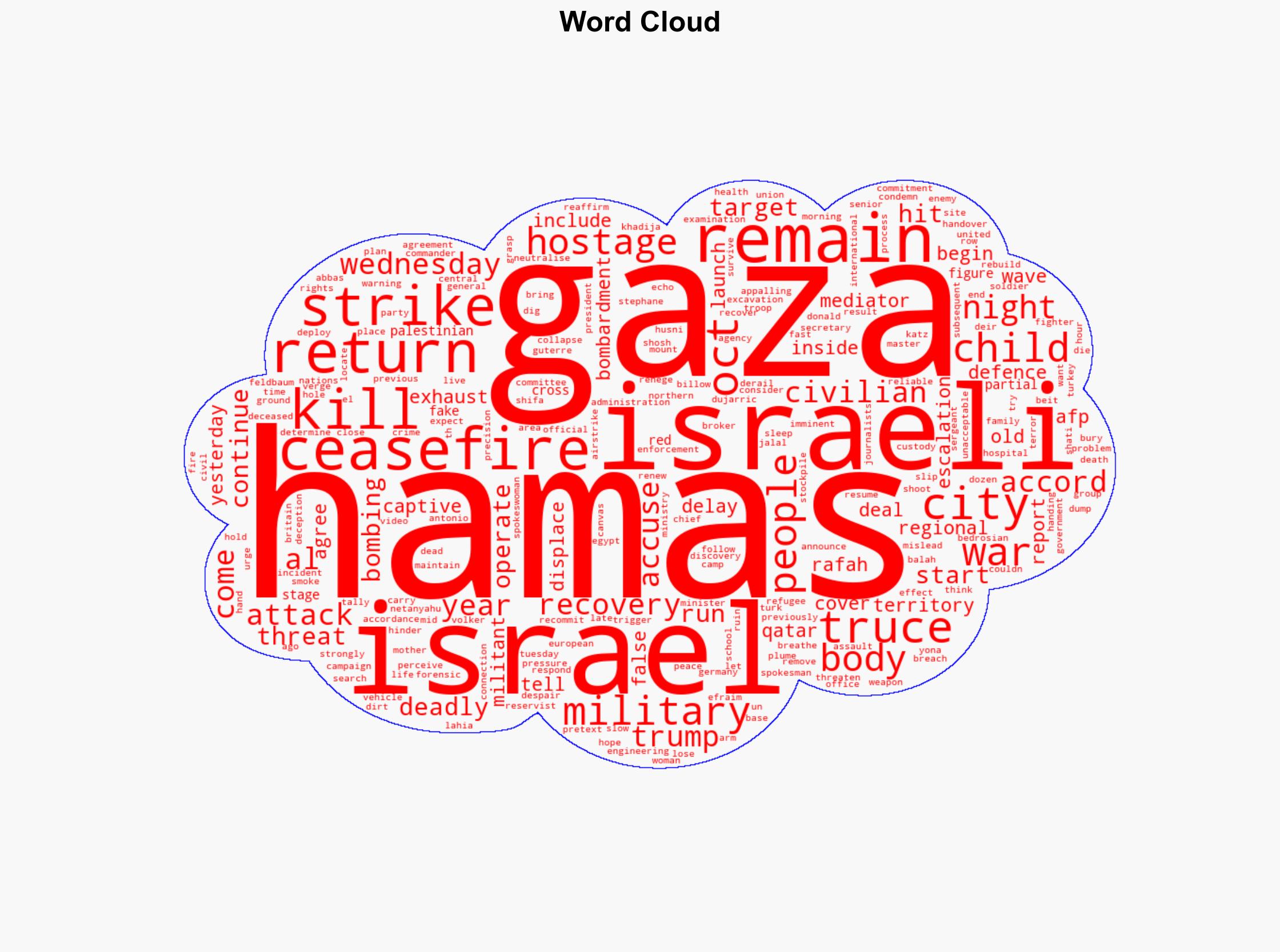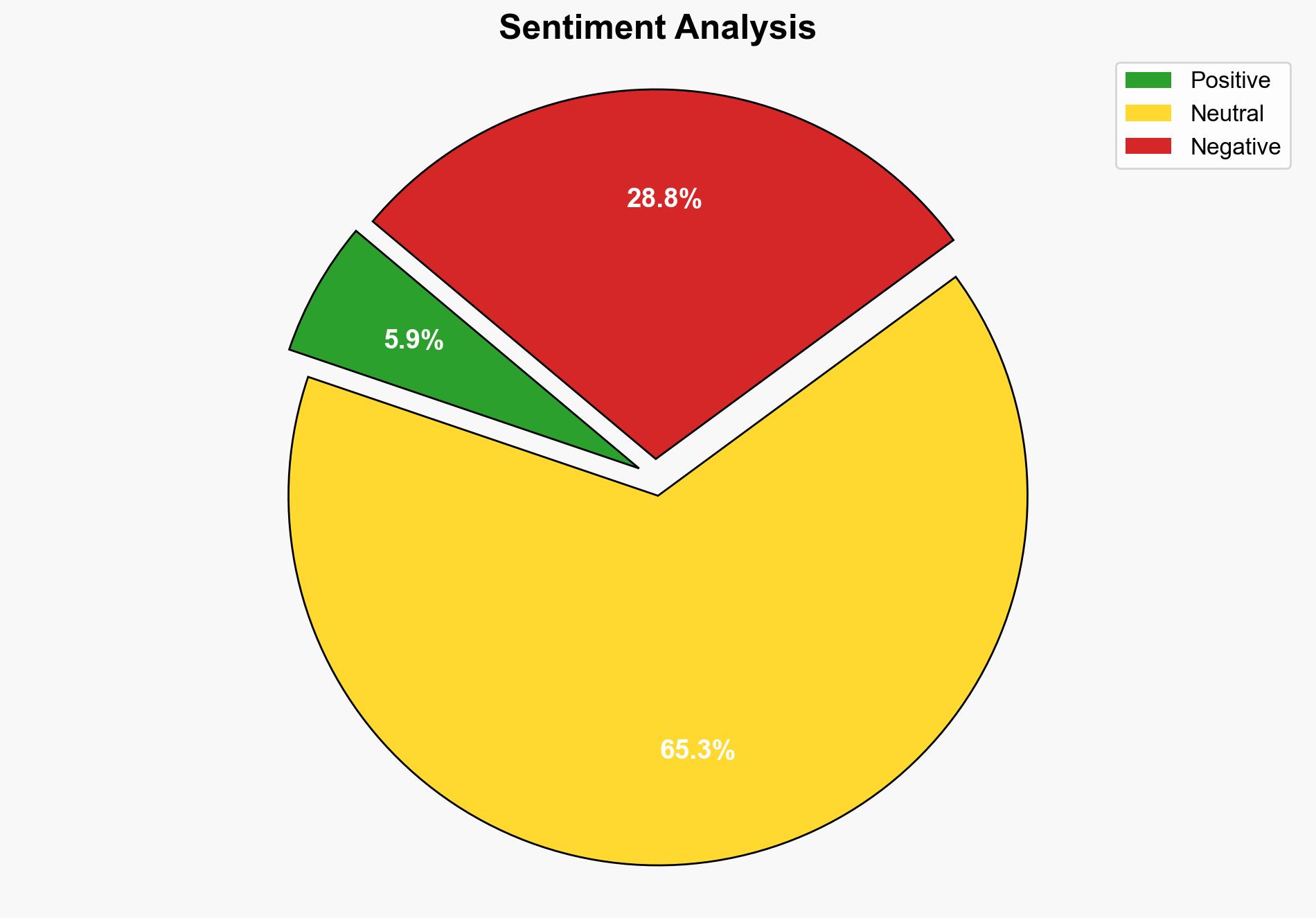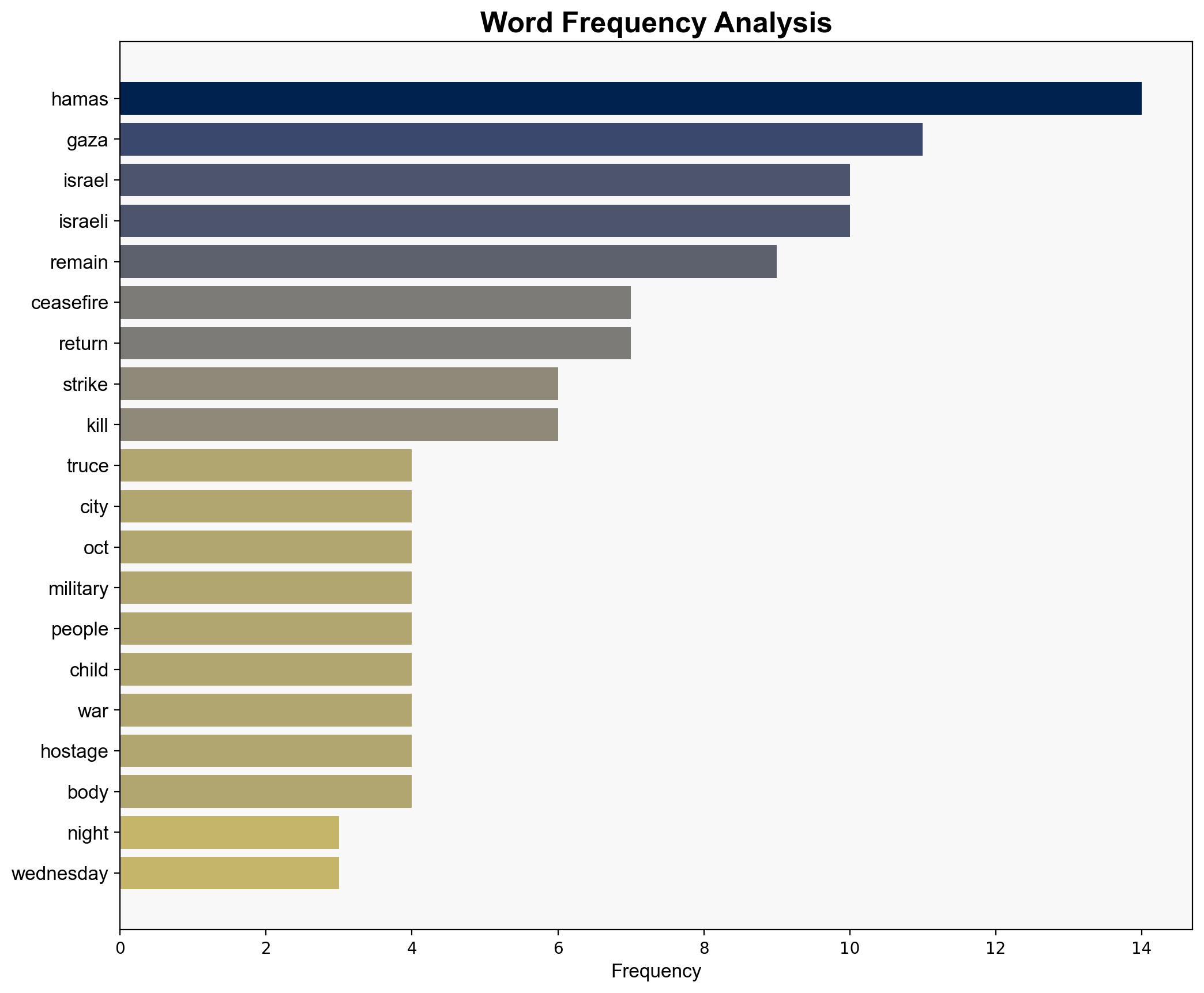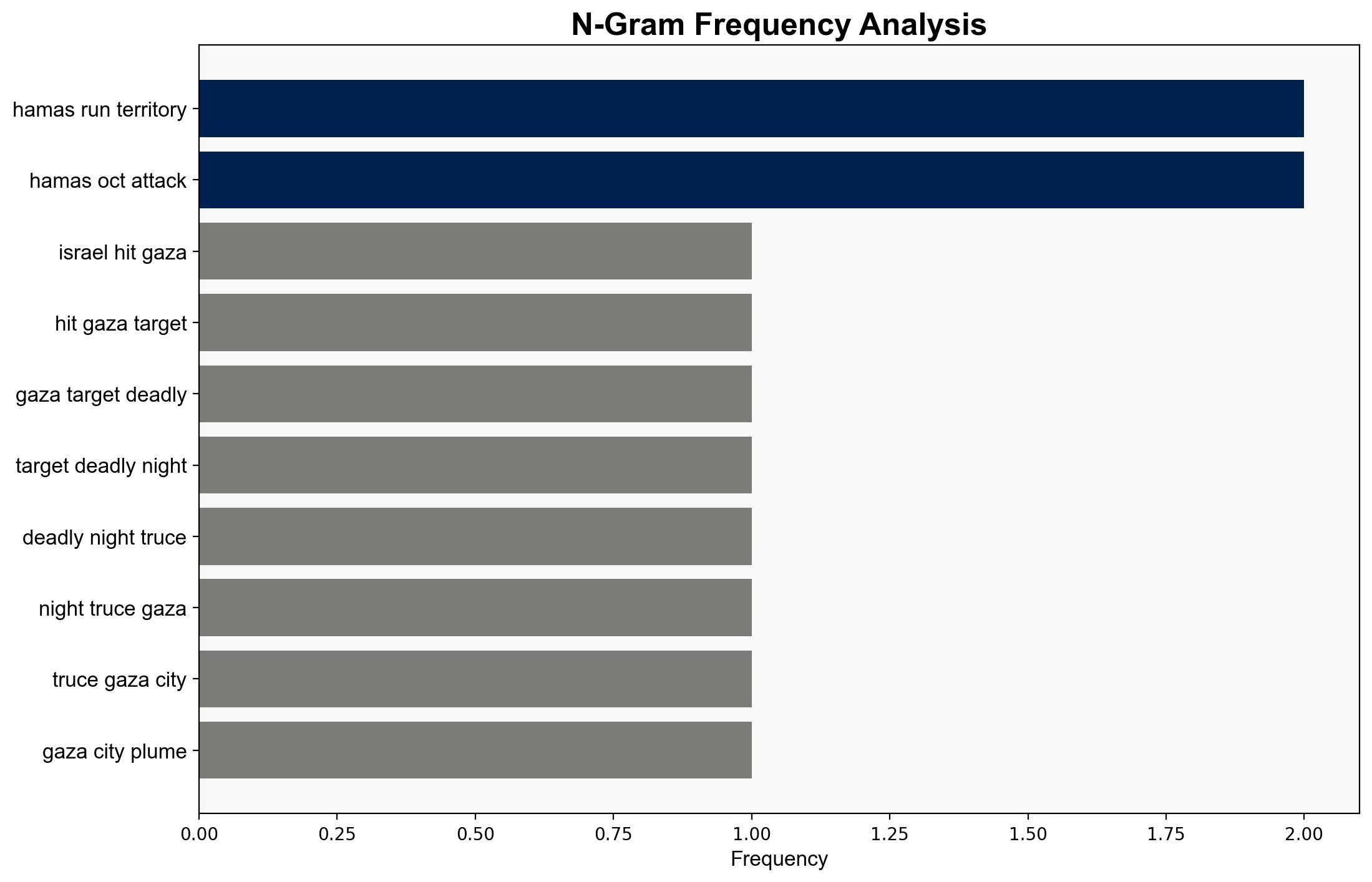Israel hits another Gaza target after deadliest night since truce – Hurriyet Daily News
Published on: 2025-10-30
Intelligence Report: Israel hits another Gaza target after deadliest night since truce – Hurriyet Daily News
1. BLUF (Bottom Line Up Front)
The most supported hypothesis is that Israel’s recent strikes in Gaza are a strategic response to perceived imminent threats from Hamas, rather than a breakdown of the ceasefire agreement. Confidence level: Moderate. Recommended action: Engage in diplomatic efforts to reinforce the ceasefire and address underlying security concerns to prevent further escalation.
2. Competing Hypotheses
1. **Hypothesis A**: Israel’s strikes are a direct response to an imminent threat from Hamas, justified under the terms of the ceasefire agreement.
– **Supporting Evidence**: Israeli military claims of targeting a weapons stockpile and preventing an imminent terror attack.
– **Contradictory Evidence**: Reports of civilian casualties and accusations of using false pretexts for military action.
2. **Hypothesis B**: The strikes represent a strategic maneuver by Israel to pressure Hamas into compliance with the ceasefire terms, potentially exploiting perceived weaknesses in Hamas’s position.
– **Supporting Evidence**: Accusations of Hamas failing to return remains and Israel’s claims of deception by Hamas.
– **Contradictory Evidence**: International condemnation and calls for peace suggest potential diplomatic fallout.
3. Key Assumptions and Red Flags
– **Assumptions**:
– Israel’s intelligence on imminent threats is accurate and actionable.
– Hamas’s actions regarding the remains are deliberate and strategic.
– **Red Flags**:
– High civilian casualties could indicate either intelligence failures or strategic miscalculations.
– Accusations of deception and staged recovery by Hamas could be propaganda or misinformation.
– **Blind Spots**:
– Lack of independent verification of the events on the ground.
– Potential bias in reporting from involved parties.
4. Implications and Strategic Risks
– **Escalation Risks**: Continued strikes could lead to a full-scale conflict, undermining regional stability.
– **Geopolitical Dimensions**: International condemnation could strain Israel’s diplomatic relations, particularly with mediators like Qatar and Turkey.
– **Psychological Impact**: Civilian casualties and displacement could fuel anti-Israel sentiment and bolster Hamas’s recruitment efforts.
5. Recommendations and Outlook
- Engage in multilateral diplomatic efforts to reinforce the ceasefire and address security concerns.
- Enhance intelligence-sharing mechanisms to prevent miscalculations and improve threat assessments.
- Scenario Projections:
– **Best Case**: Ceasefire holds, and diplomatic channels lead to a sustainable peace agreement.
– **Worst Case**: Escalation into a broader conflict, drawing in regional actors.
– **Most Likely**: Continued sporadic violence with intermittent diplomatic interventions.
6. Key Individuals and Entities
– **Donald Trump**: Involved in ceasefire mediation efforts.
– **Antonio Guterres**: Condemned civilian casualties and urged for peace.
– **Volker Turk**: Criticized the civilian death toll.
– **Shosh Bedrosian**: Israeli government spokesperson accusing Hamas of deception.
7. Thematic Tags
national security threats, regional stability, counter-terrorism, diplomatic relations





